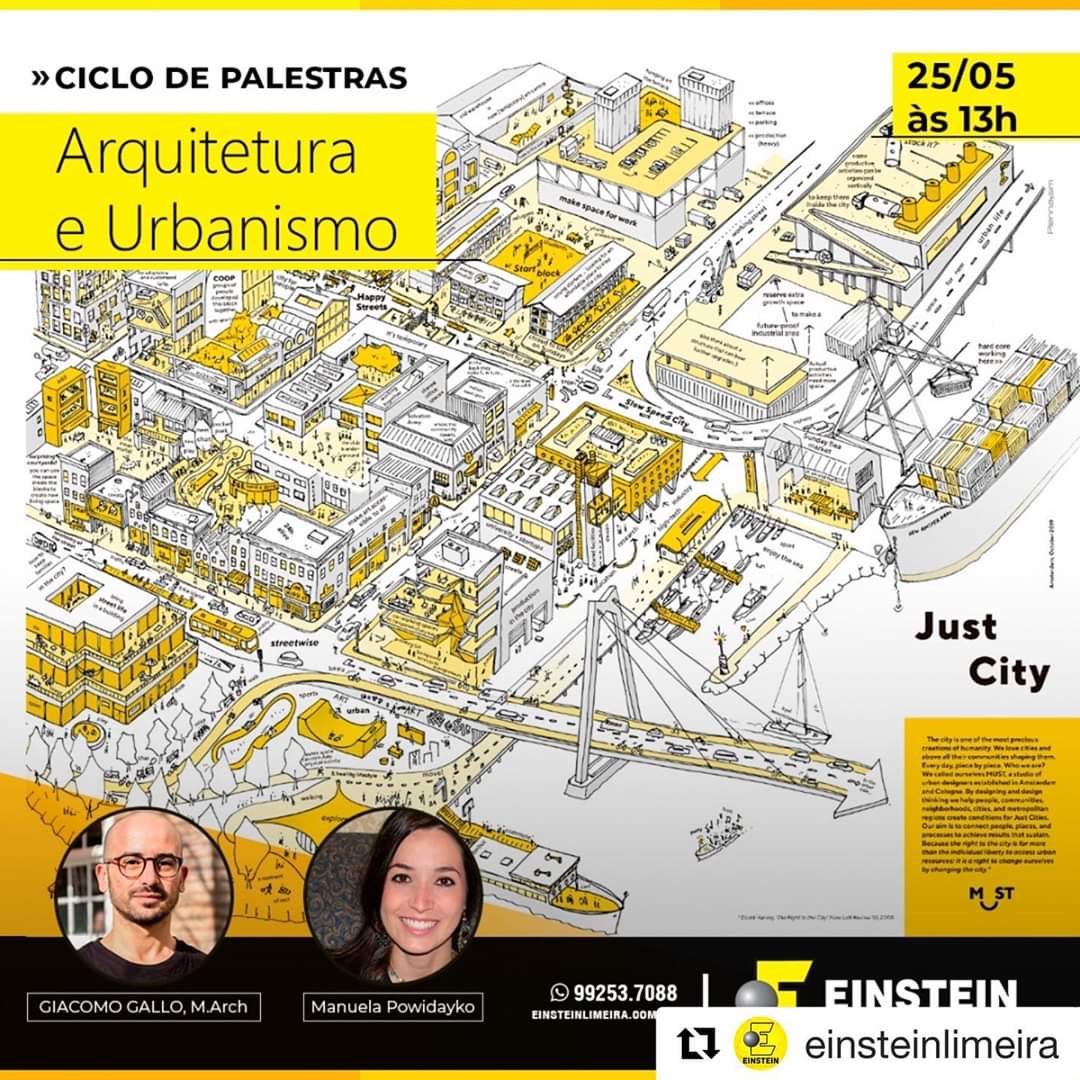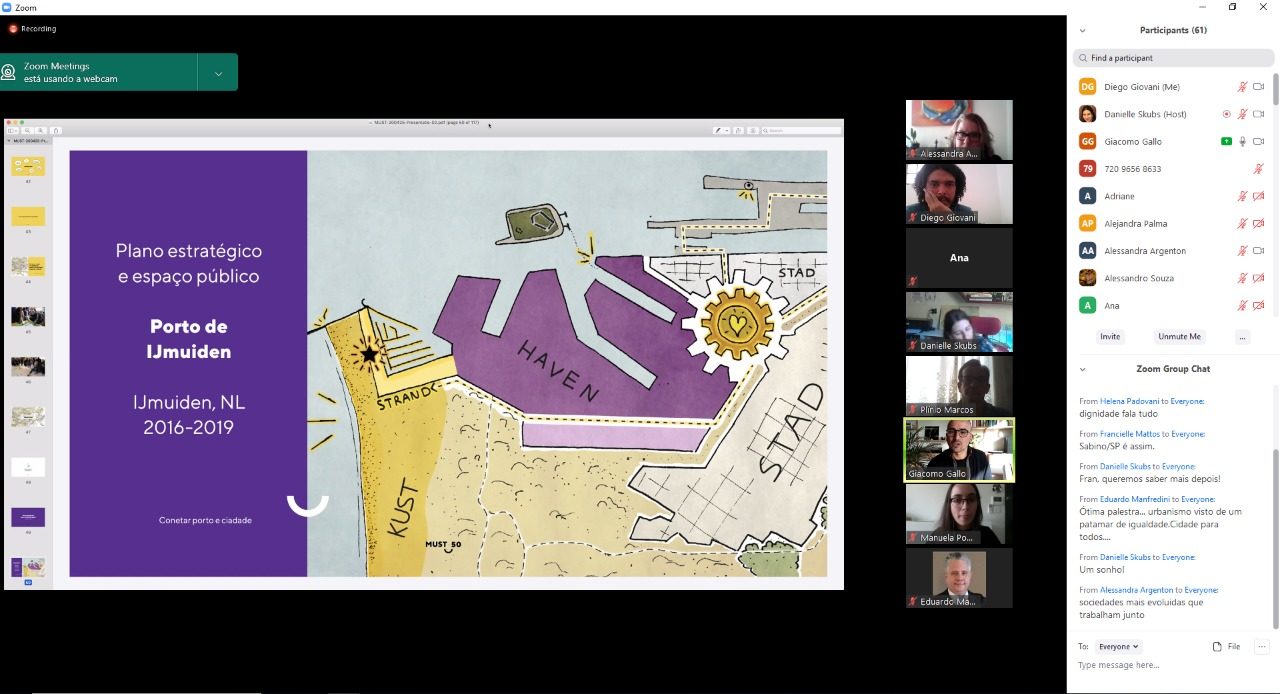MUST in Brazil on the Just City

These times of lock-down are excellent for reflection. And for connecting with people around the world who share our passion for making Just Cities.
Last Saturday I took part in a very inspiring lecture about urbanism in Amsterdam and New York, invited by the Einstein School of Architecture and Urbanism, in Limeira (São Paulo), Brazil.
“What makes a city just?”
With a large group of students and professors, we tried to answer this question approaching the topic from different perspectives: right to the city and participation, affordable housing for all, productive city, climate change and resiliency.
Our Startblock projects in Amsterdam – low-cost, high-energy efficiency, temporary housing for students and status holders – are a good example of what can be achieved by mixing different groups of people who share the same ambitions. The plan for the Havenkwartier in IJmuiden demonstrates the power of a step-by-step strategy in achieving a big, shared vision. Our design exploration of new, high-density, productive typologies in Sloterdijk, aims to give blue-collar workers generous workspaces in the city, which can stand the pressure of a fast-growing housing market.

Manuela Powidayko, senior planner at the NYC Department of City Planning, gave an eye-opening lecture about the efforts that the City of New York and its local communities have been making since Hurricane Sandy hit in 2012. She works with local residents to incorporate flood resiliency measures in the planning and design practice – from the city to the building scale. Climate change is directly affecting our right to the city, by limiting access to urban resources and worsening inequality. The New York example teaches us how citizens’ participation can make the difference in finding sustainable solutions to a worldwide problem.
Our work towards a more just society continues, reinforced by ideas and support of people across the globe!